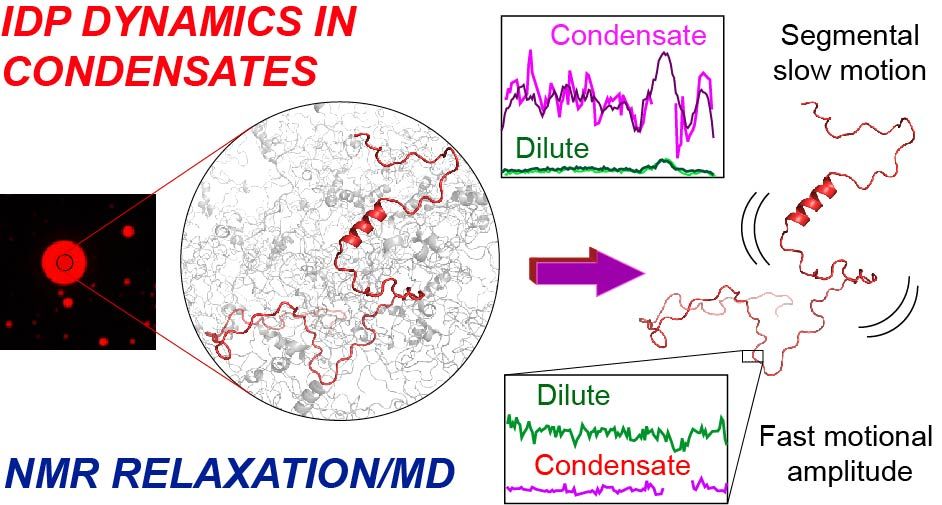Liquid-liquid phase separation, a ubiquitous phenomenon underlying the formation of membraneless compartments, is currently revolutionizing our understanding of cell biology. Flexible molecules, such as intrinsically disordered proteins (IDPs) are essential to maintaining the liquid properties of these highly concentrated organelles. Understanding the modulation of the structural and dynamic properties of these proteins upon phase transformation is essential to understanding this ubiquitous phenomenon, a question exciting considerable interest from cell biology to fundamental biophysics
Researchers in the FDP group used NMR to compare the dynamic properties of an IDP in the dilute and dense phases at atomic resolution. By measuring relaxation using different magnetic fields, they were able to characterize the dynamics of the IDP in exquisite detail, comparing properties measured in phase separated membraneless organelles with dilute and crowded conditions. Although backbone conformational sampling is largely retained, dynamics occurring on all detectable timescales, reporting on librational, backbone dihedral angle dynamics and segmental motions, are considerably slowed down, and the relative importance of these different modes are strongly modified. Using extensive ‘exascale’ MD simulation under increasingly self-crowding concentrations they could reveal the physical basis of observed changes.
This study, describing the dynamic behaviour of IDPs under phase separated conditions at atomic resolution, establishes essential procedures for investigating biochemical processes in functional liquid droplets.

Liquid−Liquid Phase Separation Modifies the Dynamic Properties of Intrinsically Disordered Proteins. Guseva S, Schnapka V, Adamski W, Maurin D, Ruigrok RWH, Salvi N, Blackledge M. Journal of the American Chemical Society 2023; 145(19):10548-10563
Serafima Guseva’s PhD was funded by GRAL, part of the Measles project selected for funding within GRAL’s 2016 Open Call for projects.
